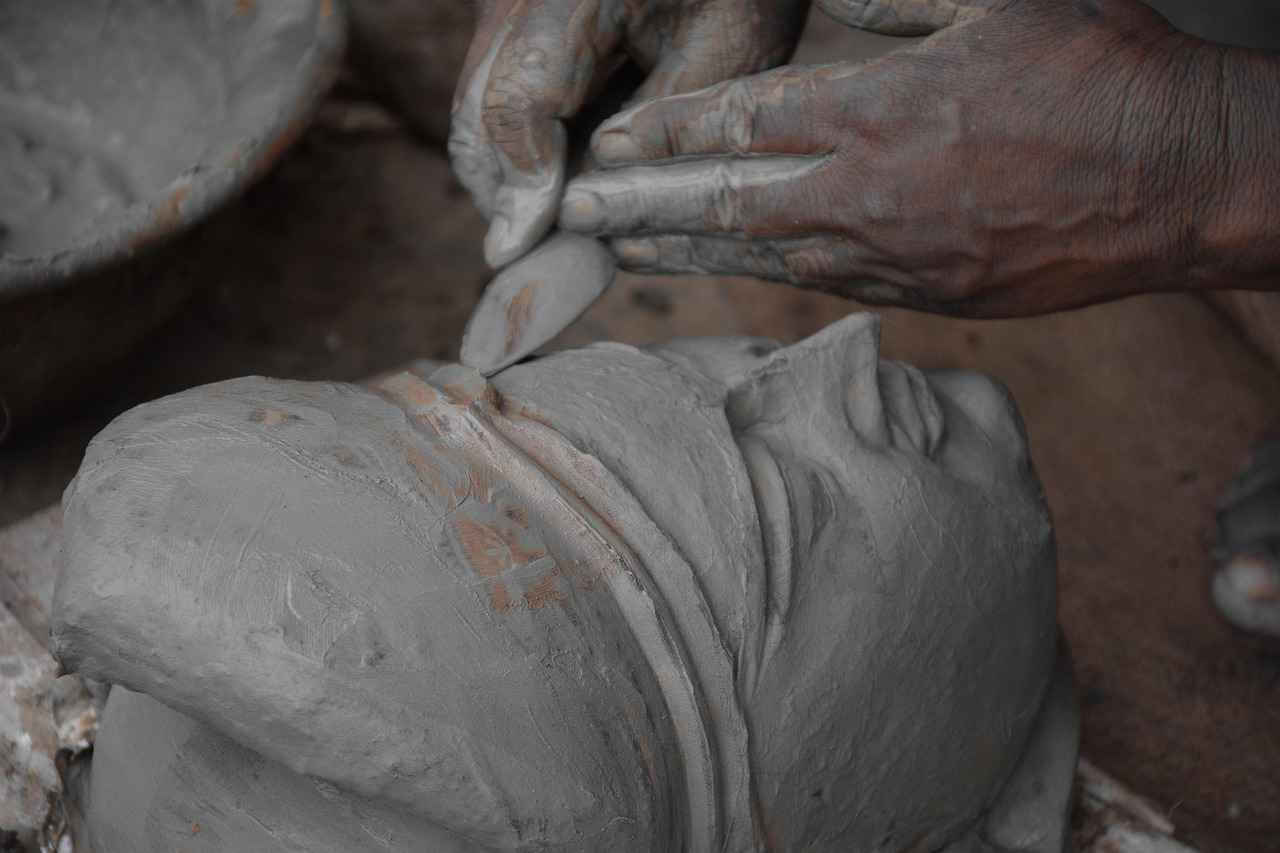This article delves into the intricate landscape of West Bengal’s healthcare system, emphasizing both the challenges it faces and the opportunities for enhancement. By examining various facets of healthcare delivery and management in the region, we aim to provide a comprehensive understanding of the current state of health services.
Overview of West Bengal’s Healthcare Landscape
The healthcare system in West Bengal is characterized by a blend of public and private services. This duality shapes the accessibility and quality of care available to the population, with each sector presenting distinct advantages and limitations.
Key Challenges Facing the Healthcare System
- Infrastructure Deficiencies: The lack of modern healthcare infrastructure is a pressing issue, particularly in rural areas where facilities are scarce.
- Workforce Shortages: A significant shortage of healthcare professionals, including doctors and nurses, hampers effective service delivery.
- Disparities in Access: There are marked differences in healthcare access between urban and rural populations, leading to inequities in health outcomes.
Public vs. Private Healthcare Services
The coexistence of public and private healthcare options creates a complex dynamic. Public services are more affordable but often suffer from long wait times. In contrast, private facilities generally offer superior quality but at a higher cost, which can be prohibitive for many.
Government Initiatives for Improvement
The West Bengal government has launched several initiatives to bolster the healthcare system, focusing on infrastructure development and improving service delivery. Programs like Swasthya Sathi aim to provide health insurance to low-income families, enhancing access to necessary services.
Community Health Initiatives
Community health initiatives are vital for addressing public health challenges. Awareness campaigns educate the population on preventive care, while mobile health units extend essential services to remote areas.
Future Opportunities for Growth
Despite existing challenges, there are significant opportunities for growth. Innovations like telemedicine can enhance access to care, particularly in underserved regions. Additionally, public-private partnerships can leverage resources effectively to tackle systemic issues.
Conclusion: A Path Forward
Addressing the complexities of West Bengal’s healthcare system requires a multifaceted approach. By focusing on infrastructure, workforce development, and community engagement, we can pave the way for a more equitable and effective healthcare landscape.

Overview of West Bengal’s Healthcare Landscape
West Bengal’s healthcare system is a complex amalgamation of public and private services, each contributing uniquely to the overall health landscape of the region. This article will delve into the intricacies of this system, exploring its strengths and weaknesses while providing insights into how it affects the healthcare experience for the population.
In West Bengal, the healthcare landscape is characterized by a dual system where both public and private sectors coexist. The public healthcare system, funded by the government, aims to provide affordable services to all citizens, particularly those from lower socioeconomic backgrounds. However, it often grapples with issues such as overcrowding and limited resources, which can hinder the quality of care.
On the other hand, the private healthcare sector offers higher-quality services and shorter wait times, but at a cost that can be prohibitive for many residents. This disparity leads to significant inequities in access to healthcare services, particularly among the rural population, where private facilities may be scarce.
Moreover, the healthcare system in West Bengal faces several challenges. One of the most pressing issues is the infrastructure deficit in rural areas, where healthcare facilities are often inadequate or outdated. This lack of infrastructure directly impacts patient outcomes and overall health indicators.
Another challenge is the shortage of healthcare professionals. Many regions in West Bengal struggle to attract and retain qualified doctors and nurses, leading to a strain on the existing workforce and diminishing the quality of care provided.
Despite these challenges, there are opportunities for improvement. The West Bengal government has initiated various programs aimed at enhancing healthcare access and quality. For instance, investments in infrastructure and health insurance schemes strive to bridge the gap between the public and private sectors.
In conclusion, while West Bengal’s healthcare system presents unique challenges, it also holds potential for growth and improvement. By focusing on enhancing infrastructure, addressing workforce shortages, and fostering collaboration between public and private entities, the region can work towards a more equitable and effective healthcare system for all its residents.

Key Challenges Facing the Healthcare System
The healthcare system in West Bengal is currently grappling with a multitude of challenges that hinder its effectiveness and accessibility. Understanding these challenges is essential for developing strategies to improve healthcare delivery in the region.
- Inadequate Infrastructure: The state suffers from a significant lack of modern healthcare facilities. Many rural areas are particularly affected, with limited access to hospitals and clinics. This deficiency not only affects the quality of care but also leads to poor patient outcomes.
- Workforce Shortages: There is a critical shortage of healthcare professionals, including doctors, nurses, and specialists. This shortage is especially pronounced in rural regions, where healthcare workers are often overburdened, leading to burnout and decreased quality of care.
- Disparities in Access: Access to healthcare services varies significantly between urban and rural areas. Urban centers may have better facilities and resources, while rural populations often face long travel distances and inadequate services, creating a gap in healthcare equity.
- Hospital Bed Availability: The ratio of hospital beds to the population is alarmingly low in West Bengal. This scarcity results in overcrowded hospitals, where patients may not receive timely care, exacerbating health issues.
- Medical Equipment Shortages: Many healthcare facilities are lacking essential medical equipment, which can delay diagnoses and treatment. This shortage further compromises the quality of care that patients receive.
Addressing these challenges is critical for the future of healthcare in West Bengal. By focusing on infrastructure development, workforce training, and equitable access to services, the state can work towards a more effective and inclusive healthcare system.
Infrastructure Deficiencies
Infrastructure Deficiencies in West Bengal’s Healthcare SystemThe healthcare infrastructure in West Bengal presents a significant challenge that directly impacts the quality of care and patient outcomes. This issue is particularly pronounced in rural areas where healthcare facilities are often scarce and under-equipped. Understanding these deficiencies is crucial for developing effective solutions to enhance healthcare delivery.
Limited Access to Quality Care
In many rural regions, residents face considerable barriers in accessing quality healthcare services. The absence of modern medical facilities means that patients often have to travel long distances to receive essential care. This not only delays treatment but can also lead to worsening health conditions.
Inadequate Hospital Facilities
The ratio of hospital beds to population is alarmingly low in West Bengal, contributing to overcrowding in existing facilities. This situation can result in insufficient attention for patients, particularly during peak times when demand surges. The lack of adequate facilities often forces healthcare providers to make difficult decisions regarding patient care.
Shortage of Medical Equipment
Many healthcare centers lack essential medical equipment, which hampers accurate diagnosis and effective treatment. This shortage can lead to misdiagnoses or delayed interventions, further complicating patient outcomes. For instance, facilities may not have access to necessary imaging technology or surgical instruments, which are vital for comprehensive care.
Impact on Health Outcomes
The deficiencies in infrastructure have a cascading effect on health outcomes. Patients in rural areas often experience higher rates of morbidity and mortality due to the inability to access timely and appropriate care. This reality underscores the urgent need for investment in healthcare infrastructure to bridge the gap between urban and rural healthcare services.
Conclusion
Addressing the infrastructure deficiencies in West Bengal’s healthcare system is essential for improving service delivery and enhancing patient outcomes. Focused efforts on building modern facilities, ensuring adequate medical equipment, and expanding access to care will be pivotal in transforming the healthcare landscape for the better.
Hospital Bed Availability
is a crucial aspect of healthcare delivery, particularly in densely populated regions like West Bengal. The ratio of hospital beds to the population is alarmingly low, which has led to significant challenges in providing adequate healthcare services. This shortage not only results in overcrowded facilities but also compromises the quality of care that patients receive.
The World Health Organization recommends a minimum of 3.5 hospital beds per 1,000 people. In West Bengal, however, the ratio is estimated to be significantly lower, hovering around 0.7 beds per 1,000 individuals. This discrepancy highlights a critical gap in the healthcare infrastructure that needs urgent attention.
- Overcrowding in Hospitals: With limited beds available, hospitals often face overcrowding, leading to long wait times for patients seeking care. This situation can exacerbate health issues and result in poor patient outcomes.
- Inadequate Patient Care: The lack of sufficient beds means that healthcare providers are often forced to prioritize cases, which can lead to inadequate care for patients who require hospitalization for serious conditions.
- Impact on Emergency Services: Emergency departments are particularly affected, as they struggle to accommodate patients in critical need of immediate attention, further complicating the healthcare delivery system.
To address these challenges, the West Bengal government has initiated several programs aimed at increasing hospital bed capacity. This includes investments in building new healthcare facilities and expanding existing ones. Additionally, partnerships with private healthcare providers may offer innovative solutions to enhance bed availability.
Investing in healthcare infrastructure is not just about increasing the number of beds; it is also about improving overall patient care and ensuring that all residents have access to necessary medical services. By addressing the hospital bed shortage, West Bengal can move towards a more effective and equitable healthcare system.
Medical Equipment Shortages
In West Bengal, the healthcare system is currently grappling with a critical issue: the shortage of essential medical equipment. This deficiency significantly hampers the ability of healthcare facilities to provide accurate diagnoses and effective treatments, thereby impacting the overall quality of care delivered to patients.
The lack of modern medical devices and diagnostic tools is particularly pronounced in rural areas, where healthcare facilities often operate with outdated or insufficient equipment. This situation not only delays treatment but also increases the risk of misdiagnosis, leading to poorer health outcomes for patients. For instance, without proper imaging technology, conditions such as fractures or tumors may go undetected until they reach advanced stages.
Furthermore, hospitals and clinics that do have some level of equipment often find themselves overwhelmed due to the high patient volume, exacerbating the challenges faced by healthcare professionals. The ratio of healthcare providers to patients is already strained, and without adequate equipment, the situation becomes even more dire.
The government has recognized these challenges and is actively working on initiatives to improve the situation. Investments in healthcare infrastructure and the procurement of modern medical equipment are essential steps in addressing these shortages. However, these efforts must be expedited to ensure that all patients, regardless of their geographic location, have access to the care they need.
In conclusion, the shortage of medical equipment in West Bengal’s healthcare facilities remains a significant barrier to effective healthcare delivery. Addressing this issue is crucial for improving patient outcomes and ensuring that all individuals receive the high-quality care they deserve.
Workforce Shortages
in West Bengal’s healthcare system represent a critical challenge that significantly impacts the delivery of medical services, particularly in underserved areas. The scarcity of healthcare professionals, including doctors, nurses, and allied health workers, has created a bottleneck that hinders effective healthcare delivery across the region.
The shortage of healthcare professionals is exacerbated by several factors. Firstly, many qualified doctors and nurses prefer to work in urban centers where facilities are better equipped and salaries are higher. Consequently, rural and remote areas suffer from a lack of essential medical personnel, which leads to inadequate care for the local population.
Furthermore, the increasing demand for healthcare services due to population growth and the rising prevalence of chronic diseases has put additional pressure on the existing workforce. This situation is compounded by the fact that many healthcare professionals are nearing retirement age, creating a further gap in the workforce.
To address these workforce shortages, the West Bengal government and various organizations have initiated several strategies:
- Incentive Programs: Financial incentives and benefits are being offered to healthcare professionals who choose to work in rural areas.
- Training and Education: Expanding medical education programs and training facilities to increase the number of qualified healthcare workers.
- Telemedicine: Utilizing technology to connect patients in remote areas with healthcare professionals, thereby improving access to care.
In conclusion, tackling the workforce shortages in West Bengal’s healthcare system is essential for improving healthcare delivery. By implementing effective strategies and fostering a supportive environment for healthcare professionals, the region can enhance its healthcare services and ensure better health outcomes for its population.

Public vs. Private Healthcare Services
The healthcare landscape in West Bengal is characterized by a complex interplay between public and private healthcare services. This dual system presents unique challenges and opportunities, influencing the accessibility and quality of care available to the population.
Accessibility of Public Healthcare
Public healthcare services in West Bengal are known for their affordability. They are largely funded by the government, making them a viable option for low-income families. However, these services often face significant challenges, including:
- Long Wait Times: Patients frequently experience extended wait periods for consultations and treatments due to high demand and limited resources.
- Resource Limitations: Many public facilities struggle with inadequate medical supplies and outdated equipment, which can compromise patient care.
Quality of Private Healthcare
On the other hand, private healthcare facilities tend to offer higher quality services with shorter wait times and better resources. However, the cost associated with private care can be a significant barrier for many residents. Key points include:
- Cost Prohibitive: The expenses related to private healthcare can lead to inequities, as not all individuals can afford such services.
- Advanced Technology: Private institutions often have access to the latest medical technologies, enhancing diagnostic and treatment capabilities.
Balancing the Two Sectors
The coexistence of public and private healthcare services necessitates a careful balance. While public services aim to provide care for all, private facilities cater to those who can afford it. This dynamic creates a healthcare environment where:
- Collaboration is Key: Public-private partnerships can enhance service delivery, leveraging the strengths of both sectors.
- Policy Improvements: Government initiatives are essential to address disparities and improve overall healthcare access.
In conclusion, understanding the complexities of public and private healthcare services in West Bengal is crucial for developing strategies that enhance healthcare access and quality for all residents. A collaborative approach between the two sectors holds the potential for a more equitable healthcare system.
Accessibility of Public Healthcare
The public healthcare system in West Bengal offers a range of services that are generally more affordable compared to private facilities. However, this affordability comes at a cost, as many residents face significant challenges when attempting to access these services. One of the primary issues is the long wait times that patients often experience. For instance, individuals seeking non-emergency treatments may find themselves waiting for weeks or even months for an appointment, which can exacerbate health conditions.
Moreover, the limited resources available in public healthcare facilities contribute to this accessibility challenge. Many hospitals and clinics are often overcrowded, leading to a strain on healthcare professionals who are already operating under staff shortages. This situation can result in rushed consultations and inadequate patient care, making it difficult for residents to receive the attention they need.
In addition to wait times and resource limitations, geographical disparities also play a crucial role in healthcare accessibility. Rural areas in West Bengal often lack adequate healthcare facilities, forcing residents to travel long distances to access even basic medical services. This not only adds to the time and cost burden but can also deter individuals from seeking necessary care.
Furthermore, despite the government’s efforts to enhance public healthcare services, many residents remain unaware of the available programs and facilities. Public health awareness campaigns are essential for educating communities about their healthcare options and ensuring that they can access the services they need.
In conclusion, while public healthcare services in West Bengal are more affordable, the challenges of accessibility remain significant. Addressing these issues will require a concerted effort from the government, healthcare providers, and communities to improve service delivery and ensure that all residents have equitable access to quality healthcare.
Quality of Private Healthcare
In the realm of healthcare, the quality of services offered by private facilities often stands out as a significant factor influencing patient choices. Private healthcare facilities are typically associated with higher standards of care, advanced medical technologies, and shorter waiting times. However, the associated costs can be a major barrier for a substantial segment of the population, leading to profound inequities in healthcare access.
One of the key advantages of private healthcare is the personalized attention patients receive. With fewer patients per doctor, healthcare providers can dedicate more time to each individual, fostering a relationship built on trust and thorough communication. This is particularly important for patients with chronic conditions who require ongoing management and support.
Moreover, private healthcare facilities often boast state-of-the-art equipment and facilities, which can significantly enhance diagnostic accuracy and treatment effectiveness. For instance, advanced imaging technologies and minimally invasive surgical options are more readily available in private settings, leading to better patient outcomes.
However, the high costs associated with private healthcare can create a two-tiered system where only those who can afford it receive optimal care. Many individuals from lower-income backgrounds may be forced to rely on public healthcare services, which, while more affordable, often struggle with resource limitations and longer wait times. This disparity can exacerbate health inequalities, leading to poorer health outcomes for those unable to access private services.
To address these inequities, it is essential for policymakers to explore innovative solutions that can bridge the gap between public and private healthcare. Initiatives such as subsidized health insurance for low-income families or public-private partnerships aimed at improving service delivery could help ensure that quality healthcare is accessible to all.
In conclusion, while private healthcare facilities offer numerous advantages in terms of quality and accessibility, the prohibitive costs associated with these services present significant challenges. Addressing these disparities is crucial for fostering a more equitable healthcare system that serves the needs of all individuals, regardless of their financial background.

Government Initiatives for Improvement
The West Bengal government has recognized the urgent need to enhance the healthcare system within the state. With a focus on both infrastructure development and service delivery improvements, various initiatives have been launched to address existing gaps and elevate the quality of care provided to residents.
Investment in Healthcare Infrastructure
- New Hospitals and Clinics: The government has initiated the construction of several new hospitals and clinics across both urban and rural areas. This expansion aims to increase the availability of healthcare services and reduce the burden on existing facilities.
- Upgrading Existing Facilities: Many existing healthcare facilities are undergoing significant upgrades, including the renovation of patient wards, the enhancement of surgical units, and the introduction of modern medical equipment.
Health Schemes and Programs
- Swasthya Sathi Program: This flagship health insurance scheme aims to provide coverage for low-income families, ensuring they have access to necessary healthcare services without financial strain.
- Maternal and Child Health Initiatives: Programs focused on improving maternal and child health are being implemented to reduce mortality rates and promote healthy practices among expectant mothers.
Community Health Initiatives
- Awareness Campaigns: Public health awareness campaigns are essential for educating communities about preventive care and encouraging healthy lifestyle choices to reduce disease incidence.
- Mobile Health Units: Mobile health units have been deployed to reach remote areas, providing essential healthcare services and screenings to populations that lack access to traditional healthcare facilities.
Future Prospects
As the West Bengal government continues to invest in healthcare, the potential for significant improvements in health outcomes is promising. By focusing on both infrastructure and community engagement, the state aims to create a more equitable and effective healthcare landscape for all residents.
Health Schemes and Programs
play a crucial role in enhancing the healthcare landscape in West Bengal, particularly for vulnerable populations. One of the flagship initiatives is the Swasthya Sathi program, which aims to provide comprehensive health insurance coverage to low-income families. This program is designed to facilitate access to essential healthcare services, ensuring that financial constraints do not hinder individuals from seeking necessary medical attention.
The Swasthya Sathi program offers benefits such as:
- Cashless Treatment: Beneficiaries can receive treatment at empaneled hospitals without the need for upfront payments, reducing the financial burden on families.
- Wide Coverage: The program covers a range of medical expenses, including hospitalization, surgeries, and diagnostic tests, catering to various health needs.
- Focus on Preventive Care: By promoting regular health check-ups and screenings, the program encourages proactive health management among beneficiaries.
In addition to the Swasthya Sathi program, the West Bengal government has launched several other initiatives aimed at improving healthcare access:
- Kanyashree Prakalpa: This scheme not only empowers young girls through education but also includes provisions for health check-ups and awareness programs.
- Bidyut Sathi: Aimed at providing healthcare services in rural areas, this initiative ensures that remote populations receive necessary medical attention.
These schemes are pivotal in bridging the gap between healthcare availability and accessibility, particularly in rural and underserved urban areas. They not only enhance the quality of life for low-income families but also contribute to the overall health of the community.
As the government continues to invest in these programs, the potential for improved health outcomes in West Bengal remains significant. Ongoing evaluation and adaptation of these schemes will be essential to meet the evolving needs of the population.
Investment in Healthcare Infrastructure
In recent years, substantial investments in healthcare infrastructure have emerged as a critical strategy to enhance the quality of healthcare services. This initiative is particularly significant in regions like West Bengal, where existing facilities often struggle to meet the demands of a growing population.
The focus of these investments includes the construction of new hospitals and clinics, which aim to alleviate the pressure on overburdened healthcare systems. These new facilities are designed to provide modern amenities and advanced medical technologies, ensuring that patients receive timely and effective care.
- Addressing Infrastructure Deficiencies: Many healthcare facilities have been operating with outdated infrastructure, which can hinder patient care. New investments are targeted at upgrading these facilities to meet contemporary healthcare standards.
- Improving Service Delivery: With the addition of new hospitals and clinics, the aim is to reduce wait times and improve access to essential medical services for all segments of the population, particularly in rural areas.
- Enhancing Patient Outcomes: By investing in state-of-the-art medical equipment and technology, healthcare providers can offer better diagnostic and treatment options, ultimately leading to improved health outcomes for patients.
Moreover, these investments are not only about physical infrastructure but also encompass training and equipping healthcare professionals. A well-trained workforce is essential to maximize the benefits of new facilities and technologies.
In conclusion, the recent investments in healthcare infrastructure represent a significant step towards addressing the challenges faced by West Bengal’s healthcare system. By focusing on modernizing facilities and improving service delivery, the government aims to create a more equitable healthcare landscape that meets the needs of its diverse population.

Community Health Initiatives
are essential in tackling public health challenges and fostering overall wellness among the population of West Bengal. These initiatives are designed to address the unique health needs of communities, ensuring that healthcare is accessible, affordable, and effective for all.
In West Bengal, various community health programs have been launched to improve health outcomes, particularly in underserved areas. These initiatives focus on preventive care, health education, and the promotion of healthy lifestyles. Below are some key aspects of community health initiatives in the region:
- Health Education and Awareness: Community health workers conduct workshops and seminars to educate residents about common health issues, nutrition, and the importance of preventive healthcare.
- Vaccination Drives: Regular vaccination campaigns are organized to ensure that children and vulnerable populations are protected against preventable diseases.
- Maternal and Child Health Programs: Initiatives aimed at improving maternal care and child health services are crucial, as they directly impact the well-being of families in the community.
- Nutrition Support: Programs that provide nutritional support and counseling help combat malnutrition, especially among children and pregnant women.
- Mental Health Awareness: Mental health initiatives aim to reduce stigma and provide resources for individuals facing mental health challenges.
Moreover, the integration of mobile health units has significantly improved access to healthcare services in remote areas. These units bring essential medical services directly to communities, ensuring that even the most isolated populations receive necessary care.
In conclusion, community health initiatives in West Bengal are vital for enhancing public health and ensuring that every individual has the opportunity to lead a healthy life. By focusing on education, accessibility, and preventive care, these programs play a crucial role in addressing the region’s health challenges and promoting overall wellness.
Awareness Campaigns
are crucial in fostering a well-informed community, particularly in the realm of public health. These campaigns serve as a bridge between health authorities and the population, providing essential information on preventive care and promoting healthy lifestyle choices. The significance of these initiatives cannot be overstated, as they play a pivotal role in reducing the incidence of diseases and improving overall community health.
Effective health awareness campaigns focus on educating individuals about various health issues, including nutrition, exercise, and the importance of regular health check-ups. By disseminating information through various channels such as social media, community workshops, and local events, these campaigns reach diverse audiences, ensuring that critical health messages are accessible to all.
Preventive care is a key focus of these campaigns, as it encourages individuals to take proactive steps in managing their health. For instance, campaigns may highlight the benefits of vaccinations, regular screenings, and healthy eating habits. By emphasizing the importance of prevention, these initiatives can significantly lower the burden of chronic diseases such as diabetes and heart disease.
Moreover, awareness campaigns often address specific health disparities that exist within communities. By tailoring messages to meet the unique needs of various populations, these campaigns can effectively engage individuals who may be at higher risk for certain health conditions. This targeted approach not only raises awareness but also fosters a sense of community involvement and empowerment.
In conclusion, public health awareness campaigns are an indispensable tool in promoting health literacy and encouraging individuals to adopt healthier lifestyles. As these initiatives continue to evolve and adapt to the needs of the community, they hold the potential to create lasting change and improve health outcomes for all.
Mobile Health Units
have emerged as a crucial solution in addressing the healthcare disparities faced by remote populations. These units are specially designed to deliver essential healthcare services directly to communities that are often overlooked by traditional healthcare systems.
In regions where access to healthcare facilities is limited, mobile health units serve as a lifeline. They are equipped with medical professionals, diagnostic tools, and treatment supplies, enabling them to provide a wide range of services, including preventive screenings, maternal and child health care, immunizations, and basic medical consultations.
One of the key advantages of mobile health units is their flexibility. They can navigate challenging terrains and reach isolated areas that may lack adequate transportation options. This adaptability ensures that vital health services are brought directly to the communities that need them most.
Moreover, these units play a significant role in health education. By offering on-site information and resources, they help raise awareness about common health issues, preventive measures, and available healthcare services. This educational aspect is vital in empowering communities to take charge of their health.
Statistics show that mobile health units can significantly increase healthcare utilization in underserved areas. For instance, studies indicate that regions served by these units have seen a notable rise in immunization rates and early disease detection, which are critical for effective treatment and management.
In conclusion, mobile health units represent a transformative approach to healthcare delivery, bridging the gap between isolated populations and essential medical services. By continuing to invest in and expand these units, we can enhance healthcare access, improve health outcomes, and ultimately create healthier communities.

Future Opportunities for Growth
Despite the existing challenges, there are significant opportunities for growth and improvement in West Bengal’s healthcare system. The potential for innovation and the establishment of public-private partnerships can play a crucial role in transforming healthcare delivery in the region.
As the state grapples with issues such as inadequate infrastructure and workforce shortages, the integration of modern technologies and collaborative efforts can pave the way for a more efficient healthcare system. Telemedicine is one such innovation that can bridge the gap in healthcare access, particularly for those in rural areas. By utilizing digital platforms, patients can receive consultations and follow-up care without the need to travel long distances, thus enhancing their overall healthcare experience.
Moreover, public-private partnerships (PPPs) can leverage the strengths of both sectors. The public sector can provide essential services, while private entities can bring in advanced technologies and management expertise. This collaboration can lead to improved healthcare facilities, better training for healthcare professionals, and enhanced patient outcomes. For instance, private healthcare providers can partner with government hospitals to provide specialized services, thereby expanding the range of care available to the population.
Furthermore, investment in healthcare infrastructure is vital. The construction of new hospitals and clinics, along with the upgrade of existing facilities, can significantly improve patient care. The government’s commitment to enhancing healthcare infrastructure through various schemes is a positive step towards addressing these deficiencies.
In conclusion, while West Bengal’s healthcare system faces numerous challenges, the opportunities for growth through innovation and strategic partnerships are promising. By embracing these opportunities, the state can work towards a more equitable and effective healthcare landscape that meets the needs of its diverse population.
Telemedicine and Digital Health Solutions
have emerged as revolutionary tools in the healthcare landscape, particularly in regions like West Bengal where access to care remains a significant challenge. As healthcare systems strive to bridge the gap between patients and providers, telemedicine offers a promising solution, especially for those in remote and underserved areas.
One of the most significant advantages of telemedicine is its ability to enhance access to healthcare services. Patients in rural areas often encounter barriers such as long travel distances and limited transportation options when seeking medical care. Telemedicine eliminates these challenges by allowing patients to consult healthcare professionals from the comfort of their homes. This not only saves time but also reduces the financial burden associated with travel.
Moreover, telemedicine facilitates timely interventions, which are crucial for managing chronic conditions. For instance, patients with diabetes or hypertension can have regular check-ins with their healthcare providers through video calls or mobile health applications. This ongoing monitoring helps in adjusting treatment plans proactively, leading to better health outcomes.
- Increased Patient Engagement: Telemedicine encourages patients to take an active role in their healthcare, leading to improved adherence to treatment plans.
- Cost-Effectiveness: By reducing the need for in-person visits, telemedicine can significantly lower healthcare costs for both patients and providers.
- Broader Range of Services: Telemedicine can encompass various specialties, including mental health, dermatology, and primary care, making it a versatile option for patients.
Despite its benefits, the implementation of telemedicine is not without challenges. Issues such as digital literacy among patients and the need for reliable internet access can hinder its effectiveness. Therefore, addressing these barriers is essential for maximizing the potential of telemedicine.
In conclusion, the rise of telemedicine and digital health solutions represents a significant opportunity to enhance healthcare access in West Bengal. By leveraging technology, healthcare providers can reach underserved populations, ultimately leading to a more equitable healthcare system. As we move forward, continuous efforts to improve digital infrastructure and patient education will be crucial in realizing the full benefits of telemedicine.
Public-Private Partnerships
(PPPs) have emerged as a pivotal strategy in enhancing healthcare delivery systems globally, and West Bengal is no exception. These collaborative efforts between the public sector and private entities can significantly improve healthcare outcomes by combining resources, expertise, and innovative solutions to address systemic challenges.
In West Bengal, the healthcare landscape is characterized by a mix of public and private services. While the public sector often provides essential services at lower costs, it struggles with issues such as infrastructure deficits and workforce shortages. In contrast, the private sector offers higher quality care but can be prohibitively expensive for many residents. This dichotomy creates an opportunity for collaboration that can lead to enhanced healthcare delivery.
- Resource Sharing: PPPs allow for the pooling of resources, enabling the construction of new facilities and the upgrading of existing ones. This can lead to improved access to healthcare services, particularly in rural areas.
- Expertise Exchange: By leveraging the expertise of private healthcare providers, public services can adopt best practices and innovative approaches to patient care. This can enhance the quality of services offered in public hospitals.
- Financial Sustainability: Collaborative ventures can help alleviate the financial burden on the public sector. By engaging private partners, the government can secure funding for projects that enhance healthcare infrastructure and services.
Moreover, the integration of technology through PPPs can further revolutionize healthcare delivery. For instance, telemedicine initiatives can be developed in collaboration with private tech firms, allowing patients in remote areas to access healthcare services without the need for travel.
In conclusion, fostering in West Bengal’s healthcare system presents a viable path towards overcoming existing challenges and improving overall healthcare delivery. By harnessing the strengths of both sectors, it is possible to create a more efficient, equitable, and responsive healthcare system that meets the needs of all residents.

Conclusion: A Path Forward
Addressing the challenges in West Bengal’s healthcare system requires a multifaceted approach that encompasses various critical elements. This approach should prioritize infrastructure development, enhance the healthcare workforce, and actively engage the community to foster a more equitable and effective healthcare landscape.
The existing infrastructure deficiencies in West Bengal are a pressing concern. Many healthcare facilities, especially in rural areas, lack modern amenities and essential medical equipment. To combat this, the government should invest in upgrading existing facilities and building new ones. This investment will not only improve service delivery but also ensure better patient outcomes.
Furthermore, the region faces significant workforce shortages. There is an urgent need to recruit and train more healthcare professionals, including doctors, nurses, and allied health workers. Implementing incentive programs to attract talent to underserved areas can help bridge this gap, ensuring that all communities have access to quality healthcare.
Community engagement is another crucial aspect of improving healthcare in West Bengal. Initiatives such as health education campaigns can empower residents to take charge of their health. By promoting preventive care and healthy lifestyle choices, these programs can significantly reduce the burden of chronic diseases.
In conclusion, a comprehensive strategy that combines infrastructure improvement, workforce development, and community participation is essential for transforming West Bengal’s healthcare system. By addressing these challenges collaboratively, stakeholders can create a more accessible, efficient, and equitable healthcare environment for all residents.
Frequently Asked Questions
- What are the main challenges facing West Bengal’s healthcare system?
The healthcare system in West Bengal grapples with several challenges, including inadequate infrastructure, workforce shortages, and disparities in access to care. Rural areas often face significant barriers, such as limited facilities and overcrowded hospitals.
- How does public healthcare in West Bengal compare to private healthcare?
Public healthcare services are generally more affordable but can suffer from long wait times and limited resources. In contrast, private healthcare facilities tend to offer higher quality services, although the costs can be prohibitive for many residents, leading to inequities in care.
- What initiatives has the government implemented to improve healthcare?
The West Bengal government has launched various initiatives, such as the Swasthya Sathi program, aimed at providing health insurance to low-income families. Additionally, there have been investments in healthcare infrastructure to address existing deficiencies and improve service delivery.
- How are community health initiatives contributing to public health?
Community health initiatives, including awareness campaigns and mobile health units, play a crucial role in promoting wellness. They educate communities about preventive care and provide essential services to remote areas, helping to bridge the gap in healthcare access.
- What future opportunities exist for West Bengal’s healthcare system?
There are significant opportunities for growth, particularly through the adoption of telemedicine and public-private partnerships. These innovations can enhance access to care and improve healthcare delivery by leveraging resources and expertise from both sectors.


























































